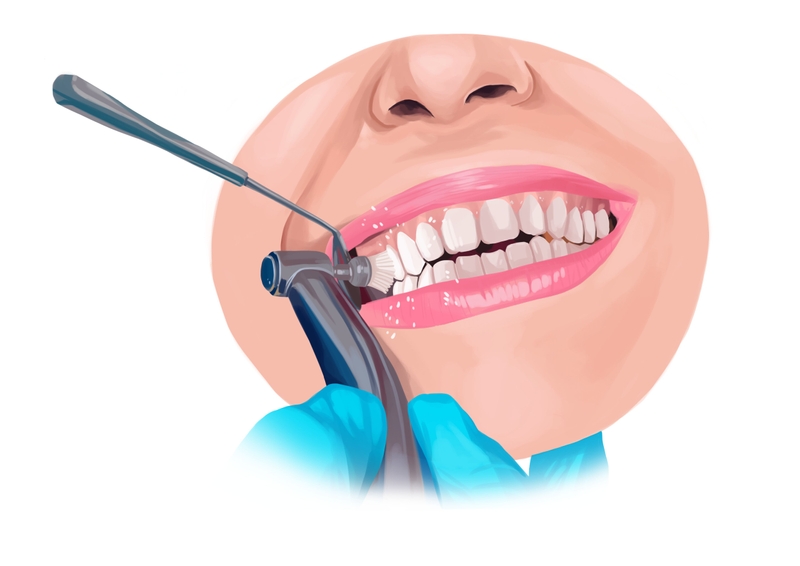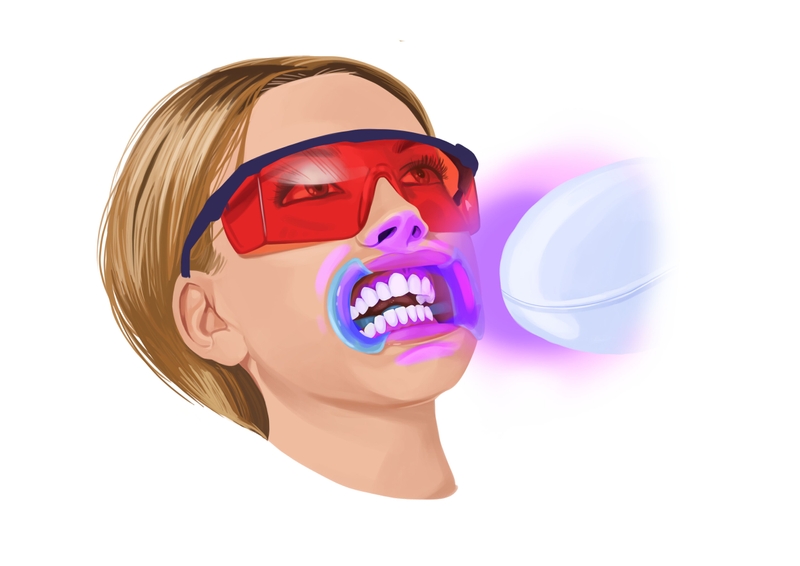- Dental bonding is a cosmetic procedure that repairs and restores missing tooth parts with tooth-colored composite resin. It is a simple and inexpensive restoration that can correct a variety of minor dental problems.
- Dental bonding can address several common imperfections. These include chipped or broken teeth, filling cavities, matching color, and changing the shape or length of a single tooth.
- The procedure is less invasive and less expensive than veneers or crowns. Typically, only one appointment is required.
We stand by you in every dental emergency. Use Authority Dental to make a quick emergency dental appointment. It is safe and hassle-free.
Is dental bonding worth it? Here's everything you need to know.
When is tooth bonding needed?
Composite bonding can be used to correct many common imperfections. It may serve for:
closing small gaps between the teeth,
filling cavities (instead of distinctive silver amalgam),
fixing chipped or fractured teeth,
protecting exposed roots,
restoring decayed teeth,
adjusting color,
changing the shape or length of a single tooth.
Teeth bonding procedure
Unlike crowns or veneers, which need to be done in a lab, dental bonding can be completed in a single appointment. What is more, the procedure is painless, so usually, anesthesia is not necessary. The exception is fixing a decayed or chipped tooth, where the inner portions of the teeth have been exposed.
Preparation

Picture by Authority Dental under CC 2.0 license
The procedure itself requires minimal preparation.
If you are considering teeth whitening, be sure to complete it before dental bonding. The shade of the material will closely match your natural teeth color, but it cannot be changed afterward. Even if you decide to whiten your smile later, the composite will remain darker. The color-changing procedure must be completed at least 2 weeks prior to bonding, to ensure that chemical substances do not interfere with one another.
Have your teeth cleaned by a professional before dental bonding, especially if you are overdue for regular check-ups.
Bonding

Picture by Authority Dental under CC 2.0 license
First, the dentist will choose the shade that's closest to your natural tooth color and prepare the composite resin. Next, they will roughen the tooth's surface and apply a conditioning liquid. This helps the bonding material to stick to the tooth.
The resin is then put on the prepared surface and shaped into the desired form. The material is hardened with ultraviolet light. Don't worry if something feels off - the dentist can correct the shape even when the resin is dry.
The whole procedure usually takes between 30 and 60 minutes.
How to take care of bonded teeth
You may experience mild sensitivity for a few days after the procedure, but aside from that, you can return to normal activities immediately after the appointment.
The bonding material is resistant. ”However, here is the honest conversation I have with every patient about the trade-off,” Lee notes. ”While that resin is strong, it is not as strong as porcelain. It is more porous, allowing it to absorb stains from coffee or red wine over time, and it is prone to chipping. Clinical studies published in journals like the Journal of Dentistry indicate that the average lifespan of bonding is approximately 5 to 7 years before it requires polishing or replacement.”
”It is an excellent solution, especially for younger patients or those not ready for the permanence of veneers. However, it is important to see it as a semi-permanent fix rather than a "permanent" restoration,” he adds.
The bonding material is not as strong as our natural teeth either.
To avoid chipping, try to refrain from biting your nails, chewing on pens, or eating ice cubes. Be careful with hard foods, such as candies. Never use your teeth as a tool to cut or open things - even if all of them are healthy.
Composite resin is prone to stains, so smoking, drinking coffee, tea, soda, or red wine are likely to leave their mark.
Teeth bonding pros and cons
Dental bonding is a cheaper and faster alternative to veneers or crowns. It is also less invasive compared to other restorations, as only a minimal amount of enamel is removed, whereas crowns require a significant reduction.
Teeth bonding is the best fit for small-scale repairs and cosmetic corrections (such as fixing mamelons teeth). It is used mainly in low-pressure bite areas, such as front teeth.
Done in one appointment
Affordable
Not invasive
Does not require anesthesia
Prone to stains
Weaker than crowns or veneers
Inadequate for large chips and severe decay
Not suitable for high-pressure areas

Dental bonding near me
Teeth bonding is a common treatment, but your comfort and satisfaction greatly depend on the dentist's skills and expertise in performing the procedure. Moreover, location plays a significant role in determining the final price tag. How to find a local dentist that will not break your budget?
Authority Dental has an extensive database of dental professionals with great reviews and affordable prices. We can help you find an affordable dental clinic nearby and book an appointment.
Your insurance and preferred form of payment will be taken into consideration to optimize the costs. Financing options are also available. The service is available 24/7 at no charge.
FAQ
How long does dental bonding last?
Teeth bonding typically lasts between 3 and 10 years. Some habits, such as clenching your teeth or chewing on pens or ice, can significantly shorten the lifespan of resin bonding.
Is it safe to do tooth bonding at home?
There are several tooth bonding kits available on the market. They are safe to use, but keep in mind that DIY treatment is suitable only for the most minor cases. The effects last much shorter - up to a few months.
Additionally, be prepared for imperfect aesthetics, as dental bonding done with specialized tools is often difficult to distinguish from natural teeth.
Is tooth bonding painful?
A dentist works on the surface of a tooth, so the procedure itself is generally not painful. However, if, as a result of decay or a large chip, the inner layers of the tooth have become exposed, you may need anesthesia.
How does dental bonding compare to veneers?
Teeth bonding works well on a small scale, while veneers can cover a bigger surface. For this reason, veneers require more tooth preparation and enamel reduction. Another difference is the material. Porcelain veneers are twice as durable as bonding, lasting up to 20 years. They are also stain-resistant, so the color will not change over time.
Does dental bonding look natural?
Yes. The dentist will use a color chart to select the shade of resin that closely matches your natural teeth. If done well, this restoration is barely noticeable.
References
- Bonding
- Effect of carbamide peroxide bleaching on the shear bond strength of composite to dental bonding agent enhanced enamel
- Comparison of Enamel and Dentin Shear Bond Strengths of Current Dental Bonding Adhesives From Three Bond Generations
- Influence of restoration thickness and dental bonding surface on the fracture resistance of full-coverage occlusal veneers made from lithium disilicate ceramic
- The science of bonding: from first to sixth generation
Harry Lee, DMD
In a world of multi-visit dental procedures, composite bonding is one of the most satisfying aspects of my work. It is the closest thing we have to "instant gratification" in dentistry, and it allows for much artistry. When a patient comes in with a small chip or a gap they have disliked for years, I can sculpt tooth-colored resin by hand and have them walking out with a transformed smile in under an hour. It is a fantastic, minimally invasive tool.